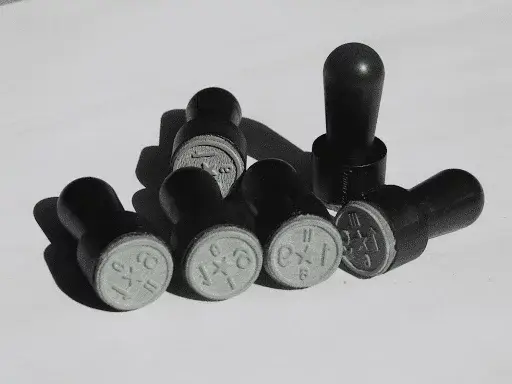The main steels used for the manufacture of impact metrological stamps by the method of industrial engraving
For affixing the results of verification to measuring instruments (MI), marking with special symbols, applied by impact, is widely used. To form an impression, special metrological tools are used - shock marks.
In accordance with the requirements of the standard, they must:
- leave an easy-to-read, crisp, convex image that remains throughout the period between verifications;
- have a high service life of at least 1000 hallmarks;
- differ in convenience and high wear resistance in active work;
- be resistant to serration, ripping and mechanical deformation.
Brands are machined on CNC milling machines, which allows for a very clear impression. Since the working surfaces of credentials the choice of materials for their manufacture is subject to stringent requirements in terms of hardness, thermodynamic and cyclic strength, impact strength and heat resistance.
Tool carbon steels
High-carbon, unalloyed steel grade U7-U10 (GOST 1435-90) has an optimal ratio of democratic cost and high technological characteristics for the manufacture of percussion metrological instruments. To give the material hardness and wear resistance, it is subject to mandatory intermittent hardening in a high-temperature furnace.
The widespread use of these grades of steel is due to simple production, ductility to heat treatment and, unlike other alloys, their:
- increased strength, since iron accounts for 97%,
- plasticity and homogeneity due to the absence of secondary carbides,
- resistance to mechanical shock due to the optimal balance of hardness 58-63 on the Rockwell scale.
Steel grade U7-U10 is used in conditions that do not cause a large heating of the working surface.
Alloy alloys
Used in the manufacture of tools for more critical purposes than carbon steels. For clear embossing of small fonts, preference is given to deeply hardened alloy steels KHVG, 9KhS, which have a high chromium content (0.6-1.7%) with the joint presence of manganese, silicon and tungsten in their composition.
Alloying elements provide impact marks:
- high dimensional stability during heat treatment,
- increased viscosity to prevent blockages of the working surface,
- good fatigue strength in bending, torsion and contact loading.
To improve the wear resistance and surface hardness of these alloys, sometimes additional chemical thermal treatment (nitriding, nitrocarburizing, etc.) is required.
